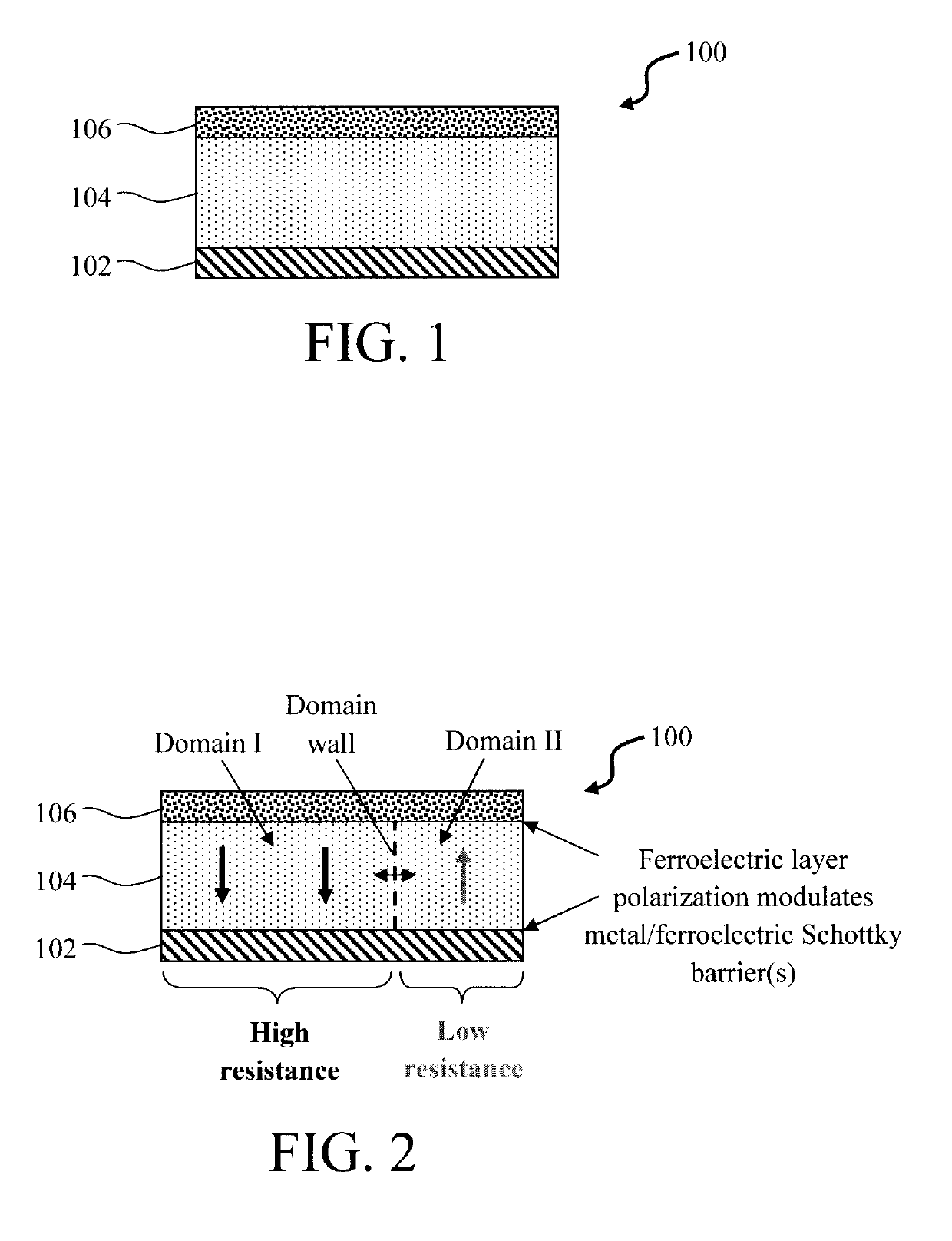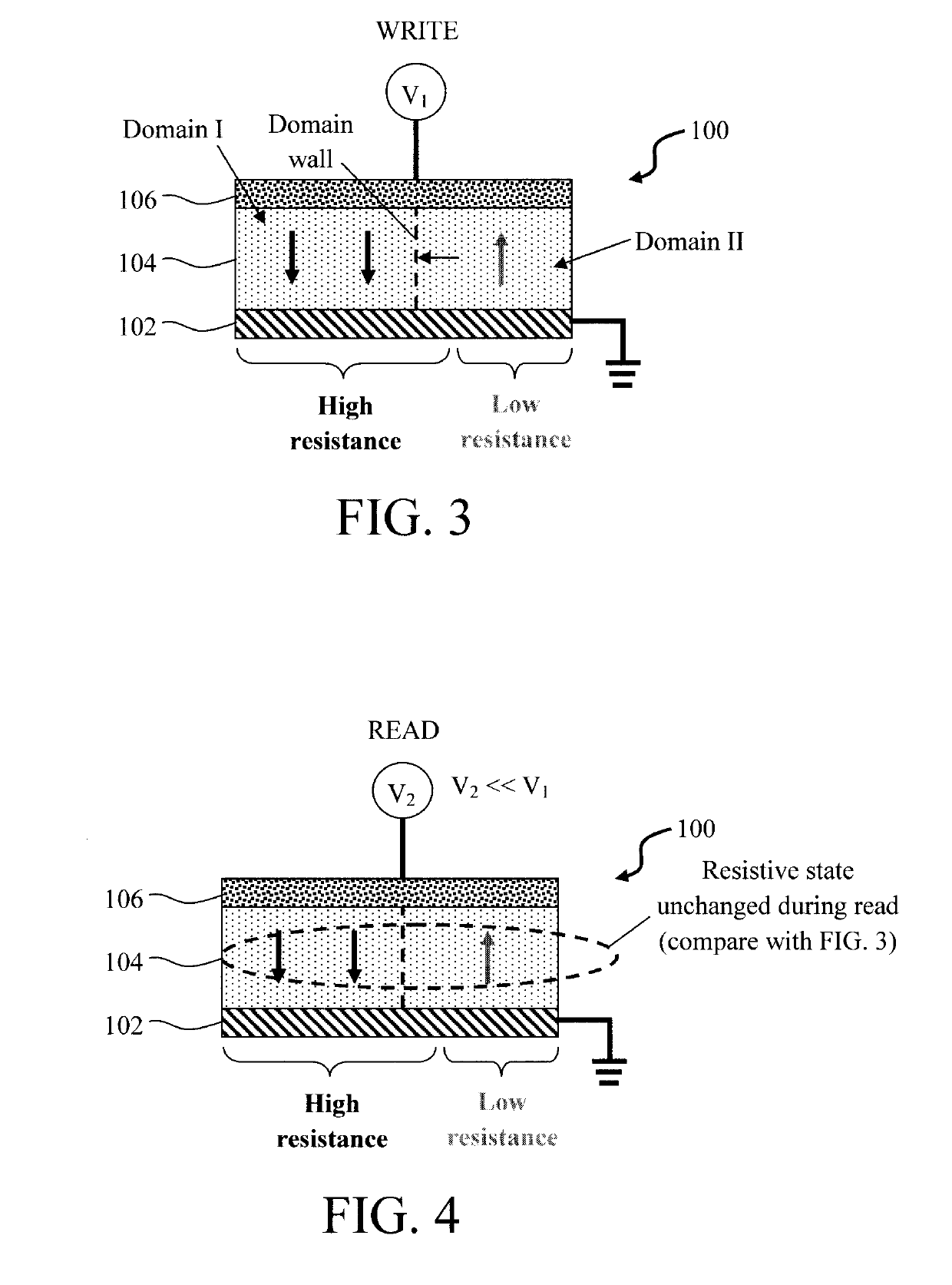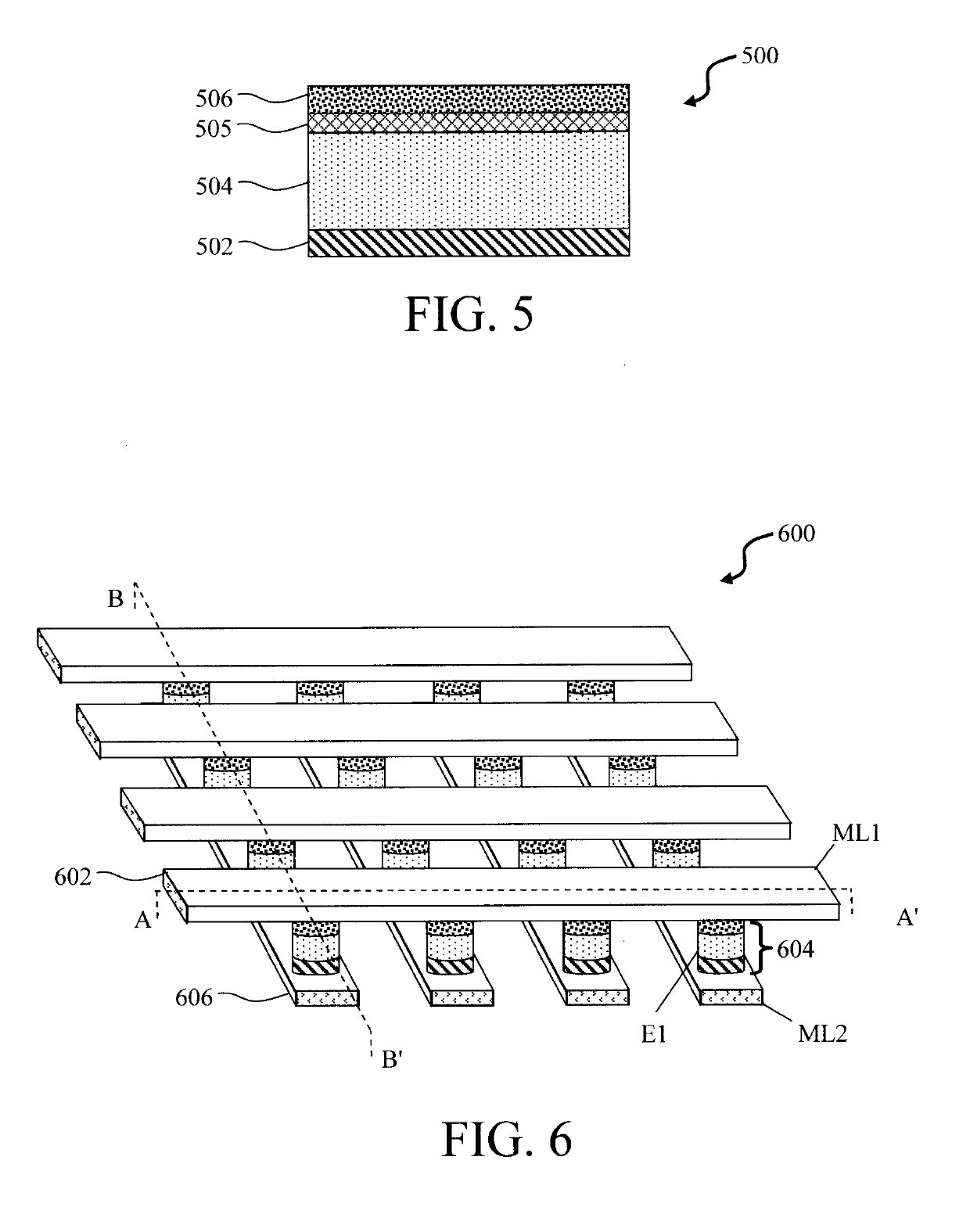Artificial Synapse with Hafnium Oxide-Based Ferroelectric Layer in CMOS Back-End
a ferroelectric layer and back-end technology, applied in the direction of metallic oxides, semiconductor devices, capacitors, etc., can solve the problem of challenging implementation on the silicon complementary metal-oxide-semiconductor (cmos) platform
- Summary
- Abstract
- Description
- Claims
- Application Information
AI Technical Summary
Benefits of technology
Problems solved by technology
Method used
Image
Examples
Embodiment Construction
[0028]Provided herein are ferroelectric artificial synapse devices that can be implemented in the complementary metal-oxide-semiconductor (CMOS) back-end, i.e., over a layer of CMOS driver circuitry. Namely, an artificial synapse is described herein that includes a metal-ferroelectric-metal (MFM) or metal-ferroelectric-semiconductor (MFS) stack in the CMOS back-end-of-line (BEOL) that incorporates a hafnium oxide (HfO2)-based ferroelectric material that crystallizes at temperatures not exceeding the maximum allowed back-end-of-line temperature (TBEOL).
[0029]By way of example only, the TBEOL is less than or equal to about 450° C., and preferably less than or equal to about 400° C. Temperatures in excess of these values can damage or degrade the performance of the existing circuitry including the back-end CMOS driver circuitry.
[0030]FIG. 1 is a diagram illustrating an exemplary artificial synapse element 100 in accordance with the present techniques. As shown in FIG. 1, artificial syn...
PUM
 Login to View More
Login to View More Abstract
Description
Claims
Application Information
 Login to View More
Login to View More - R&D
- Intellectual Property
- Life Sciences
- Materials
- Tech Scout
- Unparalleled Data Quality
- Higher Quality Content
- 60% Fewer Hallucinations
Browse by: Latest US Patents, China's latest patents, Technical Efficacy Thesaurus, Application Domain, Technology Topic, Popular Technical Reports.
© 2025 PatSnap. All rights reserved.Legal|Privacy policy|Modern Slavery Act Transparency Statement|Sitemap|About US| Contact US: help@patsnap.com



